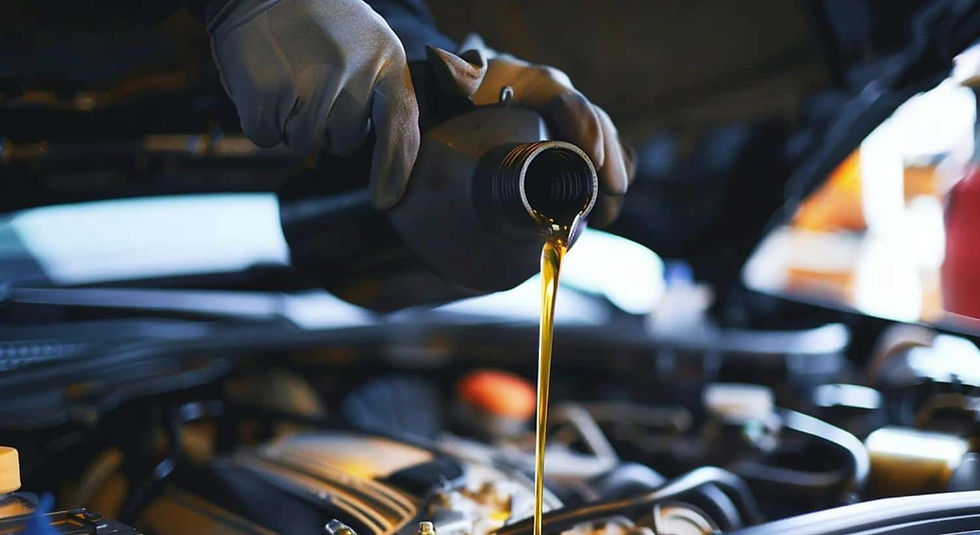How to Keep Your Car Running Smoothly Over 100,000 Miles
- Mike Floyd

- Mar 25
- 3 min read
Clocking over 100,000 miles on your car isn’t a death sentence, far from it. In fact, with proper maintenance, many motors can hit double that without blinking.
The trick? Staying ahead of wear and tear, treating your car like a long term partner, not a disposable tool, and learning what matters under the bonnet.
Whether you’re running an old diesel estate or a trusty hatchback, here’s how to keep your car purring well past the 100K mark.

1. Stick to a Regular Oil Change Schedule
Oil is your engine’s lifeblood. After 100,000 miles, your engine’s tolerances widen, meaning it works harder and needs top notch lubrication. Don’t skimp here. Use high mileage synthetic oil that includes additives to condition ageing seals and reduce leaks.
Change your oil every 5,000 to 7,000 miles, even if the manual says longer intervals. Older engines need fresher oil more frequently.
2. Don’t Ignore Strange Noises
Ticking, whining, rattling, none of these should be background noise. Past 100,000 miles, parts like your timing chain, water pump, or CV joints are more likely to wear down. Catching odd sounds early can save you from a breakdown later.
If it sounds off, it probably is. Get it looked at before it becomes a wallet busting issue.
3. Replace Spark Plugs and Ignition Components
Old spark plugs can cause misfires, rough idling, and poor fuel economy. Past 100K, swap them out, and don’t forget the ignition coils or wires if your car still uses them.
Always check your service manual for recommended intervals. Many modern plugs last 100K, but that doesn’t mean they’re in top shape by then.
4. Watch the Cooling System Like a Hawk
Overheating is one of the fastest ways to kill an engine, especially older ones. Your radiator, hoses, thermostat, and coolant need to be in proper nick. Flushing your coolant every 2 to 3 years helps prevent corrosion and keeps temps in check.
White smoke from the exhaust, sweet smells under the bonnet, or fluctuating temp gauge, all signs your cooling system’s crying for help.
5. Check the Transmission Fluid
Automatic gearboxes especially can become temperamental after 100K. Smooth shifting is a must, and dirty or low transmission fluid can lead to rough gear changes or total failure.
Flush your transmission fluid around every 30,000 to 60,000 miles, depending on your make and model. Don’t wait for it to smell burnt.
6. Keep an Eye on Suspension and Steering
Shock absorbers, struts, bushings, and ball joints wear gradually. Over time, your car may feel floaty, unresponsive, or start pulling to one side.
Check tyre wear patterns and listen for clunks over bumps. If the ride feels off, it probably is. A full suspension inspection could save your tyres, and your spine.
7. Regularly Replace Filters
An ageing car’s engine needs to breathe cleanly. A clogged air filter can affect fuel efficiency and performance, while a dirty fuel filter may starve the engine.
Replace regularly:
Air filter: every 12,000 to 15,000 miles
Fuel filter: every 30,000 miles (or as recommended)
Cabin filter: to keep the A/C fresh and effective
8. Maintain the Battery and Charging System
Older alternators and batteries are more prone to failure. Don’t wait for your car to refuse to start on a rainy Monday morning.
Check:
Battery voltage (should be around 12.6V when off)
Charging voltage (13.7 to 14.7V when running)
Corrosion on terminals and loose connections
9. Pay Attention to Rust and Bodywork
Rust doesn’t just look bad, it can weaken structural integrity. After 100,000 miles, even cars that seem mechanically sound can fall victim to undercarriage rust, corroded brake lines, or body rot, especially in wetter regions.
Wash the underside regularly, especially in winter or after driving through muddy roads. Apply rustproofing treatment if necessary.
10. Use Quality Parts, Don’t Cheap Out
By the time your car hits 100K, parts start needing replacement. While it’s tempting to buy cheap brake pads, belts, or filters, lower quality parts often wear faster and don’t perform as well.
“Buy cheap, buy twice.” Stick to OE (original equipment) or reputable aftermarket brands. You’ll save yourself time, hassle, and cash in the long run.
Keep a Maintenance Log
It’s dead easy to forget what you last replaced and when. Keeping a log, whether on paper, in your phone, or via an app, can help track what’s due next and spot patterns in recurring issues.
Log the basics:
Oil changes
Tyres and brake servicing
Battery replacements
Major repairs or inspections
Final Thoughts
Running a car past 100,000 miles isn’t just about luck, it’s about respect, awareness, and regular care. Stick to a maintenance routine, listen to your car, and don’t ignore the little things.
Whether you’re a weekend wrench spinner or just like avoiding garage bills, these habits will keep your motor going strong.
Mike Floyd
Senior Maintenance Editor, Car Care Column




Comments